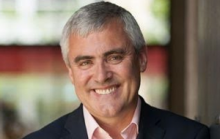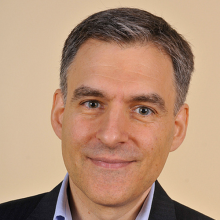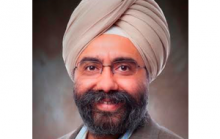How do you keep up with emerging technologies? In today's disrupt-or-be-disrupted world, it's a necessity. Smart CIOs and IT leaders prioritize their constant quest for knowledge in a few different ways. We asked IT leaders from the likes of Target, CVS Health, and GE to share their advice on this topic – and we heard some creative answers, like "venture days" and vendor speed-dating. Read on to learn their varied strategies for staying current on tech.
1. Turn to engineers

Mike McNamara, chief information and digital officer, Target: I turn to my engineers. That’s where I learn the most. At Target, we do this formally with our architecture forum every quarter. I’ll also walk the floors to learn and visit with engineers. You can also learn a lot from your suppliers. What we try to do with key suppliers is get our engineers and their engineers together to talk about their product development road map. We want to hear from their practitioners and product managers. Another very useful source of information is the VC community – where they’re investing and where they think there’s a commercial opportunity can tell you a lot about where technology is headed.
[ What's next for the CIO role? Read also CIO role: Everything you need to know about today’s Chief Information Officers. ]
2. Monitor social media

Stephen Gold, CIO, CVS Health: I spend a fair amount of time looking at LinkedIn and Twitter. I’m particular about what I subscribe to. I see what people are interested in, so these social networks are good sources of information. I also spend time with my vendor partners. I was out in Silicon Valley recently, doing what I call speed dating. I had seven vendor meetings in a day and a half. I do roundtables with my staff and reach out all the way up and all the way down the organization. If I want to understand things that are going on very deep technologically, I walk down the hallway and talk to one of the architects or one of the engineers. I believe in talking to your people, talking to other experts, and very quickly sifting through what may be mentally stimulating versus what is relevant. There is an ocean of information out there – so you need to be able to get to relevance quickly.
3. Look to the next generation

Jim Fowler, CIO, GE: I have teenagers, so that helps. They’re always pushing the limits of new technology – breaking rules and playing with the possibilities. I often see the future of work through them and think about whether we can apply what they’re doing to the work we do at GE. I spend time on Twitter and LinkedIn to see what’s on their minds of my peers and other big thinkers and I try to engage in interesting conversations – both on and offline – as much as possible.
4. Use a top-down, bottom-up approach

Dave Krupinski, CTO and co-founder, Care.com: A senior leader must put forth a consistent and focused effort to stay ahead of the evolving technology landscape. I try to stay current by using both a “top-down” and a “bottom-up” approach.
On the top-down side, I employ some different tactics. For example, I love using the Flipboard app to find relevant technology new stories targeted to my preferences. Also, I enjoy reading as much as I can about management and macro trends in technology and society. I also invest time in some great local organizations, like the Boston CIO Leadership Association (BCLA) and the Mass Technology Leadership Council (MassTLC). These organizations provide an opportunity to trade notes and share experiences with peers who face similar challenges. Peer-to-peer networking is not only essential to helping me stay current, but it also helps streamline vendor/technology selection and avoid costly mistakes. Finally, I meet with a small number of targeted vendors who I believe are defining or leading in a particular category. This allows me to audit my current technology portfolio against the marketplace and proactively plan for upgrades or changes.
From a bottom-up perspective, there’s no substitute for getting hands-on with technology. Although I no longer code each day, I still prioritize learning a new technology or programming language every year. This year I’m focused on learning the R programming language, and last year I learned iOS app development in Objective C and Swift. Also, I meet regularly with team members at all levels throughout my organization to learn from their perspectives and listen to their ideas. I’m a firm believer that innovation is driven from practitioners who are closest to the technology, and I strive to cultivate and encourage that culture.
5. Balance new and traditional media sources

Lee Congdon, CIO, Ellucian: It’s a fascinating and rapidly changing political climate we’re in right now, and I’d recommend several things to stay current. First, pick some new media and follow it regularly. Examples that come to mind are Quartz, Vox, and Slate. Then, seek a balanced perspective from traditional media like The Wall Street Journal, The New York Times, The Atlantic, and The Economist. For updates on politics, read POLITICO, The Hill, The Washington Post, and a few others. It’s important to stay informed about political events because the impact of political change and the impact of our changing world on all entities, not just governments, are going to be substantial in the coming years. Technology is an important driver of these changes. We all need to understand the trends to enable us to chart the right course.
6. Reading and research firms

Scott Sullivan, CIO & CFO, Pitt Ohio: I read a lot, and I rely on Gartner, which is a valuable resource. If you can find a good technology research firm to align with, I’d recommend it. The other key point is making sure that my direct reports have opportunities to bring their thoughts and ideas to the table to share with others, because one person can only absorb so much information. My organization falls into three disciplines: technology, business alignment, and development. Each one of those leaders brings ideas to the table — things we should be looking at and moving toward in future years.
7. Pay attention to Washington

Cliff Tamplin, consultant: The important thing at the moment is trying to determine what’s going to come out of Washington. There is a lot of hot air and more confusion than the previous changes in administration we’ve had in the recent past. For example, if you’re in the finance world, you are currently trying to understand how major changes around Dodd Frank will impact finance IT systems. Similarly, in healthcare, they’re watching closely to see what changes are happening there. Ajit Pai, the new Federal Communications Commission chairman, could have a big impact on the way IT services are delivered in the world of telecom. Currently, I’m trying to read everything out of Washington I can get my hands on.
8. Watch TED Talks

Josh Hebert, CIO, Highlands Residential Mortgage: I attend industry-specific conferences throughout the year, but I also try to attend at least one conference that’s more broadly focused on new, innovative technology outside of the mortgage industry. It enables me to learn about new approaches and technologies that could eventually fit into the financial industry and benefit us as well. When I can’t get out to conferences, I watch TED Talks. In fact, I watch a lot of talks that have nothing to do with IT, but they certainly help with leadership. They often provide a unique perspective on a variety of topics that I can then share with my team.
9. Leverage your team, partners, and peers

Tej Anand, CTO/CDO, CareCentrix: Staying current is not a trivial task for CIOs. You don’t have many hours in the day to read and research things for yourself. So I use a three-pronged strategy. First, I set up Google alerts on topics that are of interest to me. I can skim these daily to keep abreast of what’s happening. Secondly, as I read these topics, I pick up on buzzwords and ask all of my partners what they know about them. Sometimes I’ll ask for a 30-minute call so they can bring me up to speed. Usually, this results in having someone present to me a synthesis of perspectives that I can then build upon – which saves me many hours of individual research. Third, when I find a topic worth dwelling in, I’ll set up a small group within my business technology organization to discuss, research, or build something, then present their learnings to the larger team.
10. Consider a “venture day”

Fran Dramis, Former CIO, Bellsouth: One of the things I wish I had done more of throughout my career is connect with startup businesses, because that’s where innovation is happening. I’ve been working with the CIO of a Fortune 30 company, and my advice to him is to have a venture day: Get 10 venture groups to come in and present. The result is you get people thinking about the state of what could be possible, and I think that’s the most effective way of staying on top of things.
11. Stay connected locally and beyond

Marilyn Daly, CIO and VP of operations, Neighborhood Health Plan: I have a relationship with Gartner, and I attend their major symposium annually, as well as some of their smaller local events. They recently had an event for women CIOs, which I found fascinating. We all left that with a connection point, where we’re all from different industries, but we all found value in the relationship.
I'm a board member of NEHEN, the New England Health EDI Network, and that’s a cross-functional makeup of CIOs from both health plans and provider organizations. I also participate in a lot of LinkedIn groups, and I read the Boston Business Journal and The Wall Street Journal every day.
[ Culture change is the hardest part of transformation. Get the digital transformation eBook: Teaching an elephant to dance. ]






